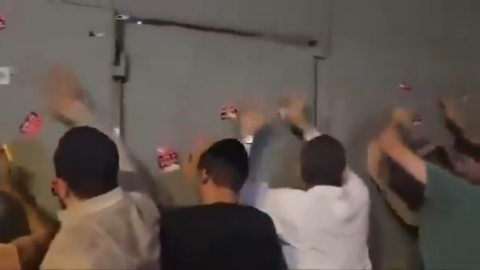ALBAWABA - Only Yemeni sources told Erm News that the Houthi movement has made a number of quiet military and logistical changes in the past few weeks after Israel hit them multiple times.
The steps taken, such as moving important sites, improving concealment, and opening up more coastal supply routes, show that Israel, the US, or both are getting ready for a long and complicated war in the Red Sea and across Yemen if they attack the Iran-backed group.
A knowledgeable Yemeni source says that the Houthis have recently moved key military positions around, improved their camouflage techniques, and added more storage and launch sites to make themselves less vulnerable.
The group has started using underground facilities and disguised civilian buildings, like workshops, garages, and hidden parking lots, to hide the movement of weapons and supplies.
The source also said that the militia has stepped up security around commanders' movements and protected internal supply lines to lessen the damage from airstrikes.
Reports say that even after Israeli attacks on coastal infrastructure like Ras Issa and Hodeidah, satellite images show that fuel and other supplies are still getting into Yemen, though in riskier and less organized ways. Some shipments seem to be only partially unloaded or moved to different offloading points, which suggests that the Houthis' logistics network is still working.
Signs of a Longer War Plan
The source said that the Houthis' most recent actions show that they are not getting ready for a short fight but rather a long, multi-front war. They also mentioned Iran's ongoing support, which is becoming less public.
The Houthis announced "general mobilization" earlier this week. This was seen as a way to stop people from coming to Yemen from both inside and outside the country.
Iran is still helping, but the help is now said to be focused on smuggled parts and remote guidance instead of sending Revolutionary Guard advisers to Yemen like they used to.
If Israel launches a large-scale attack, the Houthis are likely to step up their attacks on Israeli and U.S. ships at sea and increase their long-range drone and missile strikes on Israeli territory.
Field assessments show that the militia has changed from a fixed defensive position to a distributed network model, which is meant to take hits and slowly restore operational capacity.
Logistics Are Still the Main Battleground
Western intelligence reports say that even though Israel and the US have attacked a lot, they haven't yet taken the most important step: permanently shutting down the Houthis' small ports and smuggling routes by land and sea.
The reports say that Iranian support is shifting toward methods that are hard to see but last a long time. This could make the Houthis stronger unless it is completely stopped. The Yemeni source also said that if the conflict spreads to Lebanon, Iran, or Iraq, the Houthis seem to be getting ready for a long fight, knowing that they are still a top military priority for both Israel and the United States.












